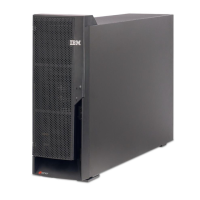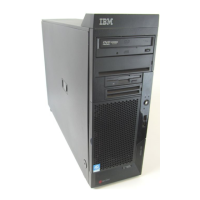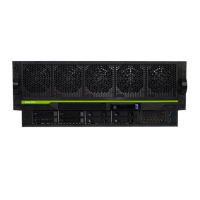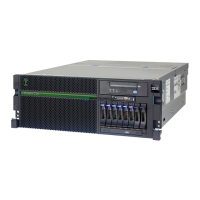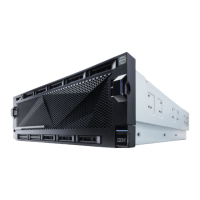iSeries architecture: Fundamental strength of the IBM ^ i5 and iSeries 33
Draft Document for Review October 18, 2004 5486AdvTech.fm
Linux for iSeries and Eserver i5
One of the most important developments in business computing in recent years
is the arrival of Linux. Linux, an open-source implementation of UNIX, is rapidly
becoming the de facto standard for fundamental infrastructure applications like
Web servers, firewalls, file servers and e-mail servers. Now, thanks to the
powerful combination of the scalability, reliability and manageability of Eserver
i5 servers and the flexibility of Linux, businesses can take advantage of a new
way to simplify their IT infrastructure and expand their application environment --
with the potential to greatly reduce cost.
Taking advantage of advanced LPAR technologies, customers can consolidate
multiple standalone infrastructure servers on a single Eserver i5 server --
automatically moving processor and dynamically adding storage resources
between individual partitions to support changing business demands. Linux
supports an array of open source solutions to run your infrastructure. In addition,
IBM is working with leading Linux solution providers to expand the set of
business applications and solutions available for Eserver i5.
The iSeries family of servers can combine business applications and on demand
business solutions with Linux applications on a single server. A Linux server can
be set up with as little as 10% of an iSeries processor. Each partition supports its
own independent operating system image and can be isolated from other
partitions, allowing business applications to run securely alongside Internet
solutions. With an OS/400 V5R2, processor resources can be dynamically
moved between partitions to support changing business demands. Eserver i5
supports automatic processor movement.
The iSeries award-winning Linux implementation exploits the i5/OS advanced
storage architecture by leveraging the storage resources in the i5OS partition.
The 64-bit environments can offer more scalability through larger memory and
address more spaces than traditional 32-bit Linux environments. Up to 10 Linux
partitions per processor are supported, with a system maximum of 254 partitions
running on POWER5 technology-based servers, and 31 on POWER4 and
SSTAR processors. Linux distributions from Novell, Inc. (SUSE LINUX) and Red
Hat, Inc. support the iSeries family of servers.
See “Linux for iSeries” on page 506 for more details.
IBM i5/OS
One of the single, most dramatic points about the iSeries servers is that the
operating system, i5/OS, is a single entity. This section describes the meaning of
this concept.

